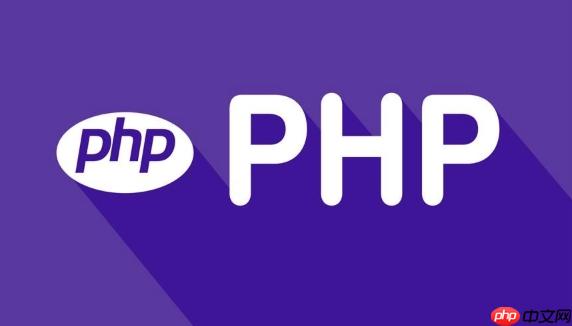模型关联用于定义数据库表间的逻辑关系,如一对一、一对多、多对多等,通过在模型中声明关系实现关联查询。Laravel和ThinkPHP等框架支持通过hasOne、hasMany、belongsToMany等方法定义关联,并利用with进行预加载以避免N+1问题,提升性能。核心在于将表关系映射为对象关系,使代码更清晰高效。

在现代PHP框架中,如Laravel、ThinkPHP、Yii等,ORM(对象关系映射)是操作数据库的核心工具之一。通过ORM,开发者可以将数据库表映射为类(模型),并通过面向对象的方式进行数据操作。而模型关联则是实现多表查询与数据联动的关键机制。
模型关联用于定义不同数据表之间的逻辑关系,比如用户和文章之间是一对多关系,文章和标签之间是多对多关系。通过在模型中声明这些关系,可以在查询时自动加载相关数据,避免手动写复杂SQL。
Laravel的Eloquent ORM是PHP中最成熟的ORM之一,其关联定义简洁直观。
1. 一对一关系
立即学习“PHP免费学习笔记(深入)”;
假设 User 模型与 Profile 模型是一对一关系:
class User extends Model
{
public function profile()
{
return $this->hasOne(Profile::class);
}
}反向关联:
class Profile extends Model
{
public function user()
{
return $this->belongsTo(User::class);
}
}2. 一对多关系
class User extends Model
{
public function posts()
{
return $this->hasMany(Post::class);
}
}3. 多对多关系
使用中间表 tags_posts:
class Post extends Model
{
public function tags()
{
return $this->belongsToMany(Tag::class);
}
}4. 多态关联
例如Comment可关联Post或Video:
class Comment extends Model
{
public function commentable()
{
return $this->morphTo();
}
}
class Post extends Model
{
public function comments()
{
return $this->morphMany(Comment::class, 'commentable');
}
}ThinkPHP使用类似语法,但关键字略有不同。
定义一对多:
class User extends Model
{
public function posts()
{
return $this->hasMany('app\model\Post');
}
}多对多:
class Post extends Model
{
public function tags()
{
return $this->belongsToMany('app\model\Tag', 'post_tags');
}
}调用方式:
$user = User::with('posts')->find(1);
foreach ($user->posts as $post) {
echo $post->title;
}为避免N+1查询问题,应使用预加载(eager loading)。
Laravel中使用 with():
$users = User::with('posts.comments')->get();ThinkPHP中也支持:
$list = User::with(['posts', 'profile'])->select();
这样能一次性加载关联数据,大幅提升性能。
基本上就这些。掌握模型关联定义,能让代码更清晰、数据库操作更高效。不同框架语法稍有差异,但核心思想一致。关键是理解表间关系,并正确映射到模型方法中。
以上就是PHP框架如何进行模型关联操作_PHP框架ORM关联关系定义的详细内容,更多请关注php中文网其它相关文章!

PHP怎么学习?PHP怎么入门?PHP在哪学?PHP怎么学才快?不用担心,这里为大家提供了PHP速学教程(入门到精通),有需要的小伙伴保存下载就能学习啦!

Copyright 2014-2025 https://www.php.cn/ All Rights Reserved | php.cn | 湘ICP备2023035733号